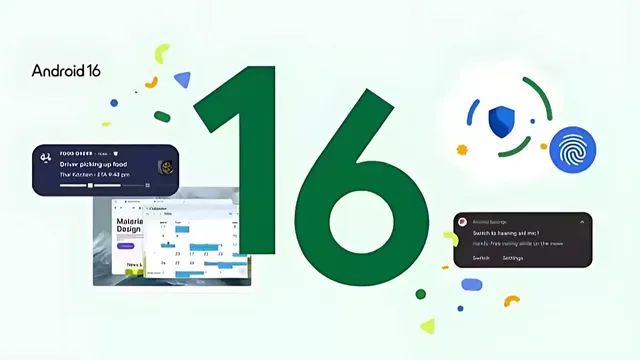- By Alex David
- Mon, 10 Nov 2025 02:12 AM (IST)
- Source:JND
Google is improving how Android handles location permissions with a new feature in Android 16 called density-based coarse locations, designed to make sharing location data more privacy-friendly – particularly for users in less densely populated areas. The feature builds upon Android's existing location framework, which offers two levels of access – Precise and Approximate - but makes Approximate access smarter and more context-aware.
Here's an explanation of how the system works, why it matters and what else Google is doing to enhance location privacy and accuracy on Android devices.
Precise vs. Approximate Location: The Basics
Android gives users control over how accurately apps can track their location. Apps can request:
- Precise location provides accurate GPS coordinates within 3-50 metres for accurate GPS location services.
- Estimated location provides a rough estimation -- typically within 3 square kilometres or approximately 1.2 square miles.
ALSO READ: Apple Reportedly Developing 5 New Satellite Features For iPhones: Could Starlink Be Involved?
Navigation apps like Google Maps or Uber require precise location data in order to function effectively, while many weather, shopping and news apps work fine using only approximated data as their location source.
Unfortunately, many apps still request precise access even when it is no longer necessary, raising privacy concerns about unnecessary tracking.
The Privacy Problem with Approximate Locations
While approximate locations are meant to protect users’ privacy, they haven’t always been foolproof.
In densely populated cities, a rough estimate can place you among thousands of users — making it nearly impossible to identify you personally. But in rural or low-density regions, even an “approximate” location might pinpoint your exact house or neighbourhood.
For example, if your approximate location covers a 3 km² area that includes only a few roads or buildings, your privacy advantage practically disappears.
Android 16’s Solution: Density-Based Coarse Locations
To solve this, Android 16 introduces density-based coarse locations, which dynamically adjust how rough your shared location is based on local population density.
In simple terms:
- If you’re in a city, Android provides the same level of approximate accuracy as before.
- If you’re in a rural or sparsely populated area, Android makes your location data even less precise, ensuring that you can’t be easily singled out.
This change helps maintain the same level of anonymity regardless of where you are. It’s a smarter approach to privacy that recognises how geography affects personal data exposure.
How It Works Internally
Behind the scenes, Android 16 introduces population density providers — system components that determine how densely populated your area is.
Google Play Services will likely integrate these providers, which already power location APIs for most Android apps. OEMs can also implement their own versions - this may be particularly important in regions like China where Google's services aren't accessible.
While the code for this feature appears to be enabled on Pixel devices, it’s not yet confirmed whether it’s active in production. Early testers say the developer flag for population density–based adjustments is turned on in Android 16 builds, but there’s no public confirmation from Google yet.
Testing the Feature in the Real World
One way to verify if the feature is live would be to compare approximate location accuracy in different areas. For instance, a user could test in a major city and then in a rural region to see whether Android returns a significantly broader estimate in the latter case.
Google hasn’t shared official documentation or public release notes about this feature yet, suggesting it may still be rolling out quietly behind the scenes.
Bluewave: A New Engine for Precise Location Accuracy
Alongside privacy improvements, Google is reportedly working on Bluewave, a new positioning engine that enhances the precision of Android’s location system.
Bluewave combines GNSS (Global Navigation Satellite System) data with correction data from nearby base stations, improving accuracy by an estimated 2.25 times over current methods.
This hybrid model would reduce signal errors, improve reliability in dense urban environments, and refine real-time positioning for apps that rely heavily on location — such as ridesharing, logistics, and AR navigation.
Google began testing Bluewave in late 2024; however, there's been no indication it has been officially implemented yet. Due to lack of announcements regarding its deployment or integration into Android 16 for further evaluation.
ALSO READ: SpaceX Launches Starlink Group 11-14, Adding 28 New Satellites To Its Expanding Internet Network
Why This Matters for Users
Location tracking has always been a double-edged sword — it’s critical for many app features but also one of the biggest privacy risks. With Android 16, Google appears to be striking a better balance between accuracy and anonymity.
The density-based coarse location feature ensures that approximate mode truly protects user privacy, no matter where they are. Meanwhile, the Bluewave engine (if released) could bring faster, more dependable positioning for users who choose to share precise location data.
Final Thoughts
Android 16’s new approach to location privacy marks a thoughtful evolution of how mobile devices handle user data. Instead of treating privacy as a one-size-fits-all feature, Google is adapting its system to real-world conditions—ensuring that “approximate” location means the same thing whether you’re in Mumbai or a small village in Rajasthan.
Google has made clear its intention to develop an intelligent, safe location system through these updates, with Bluewave potentially coming online later this year. If app developers respect these finer-grained permissions, Android users could finally experience an Android experience where convenience won't compromise privacy.

